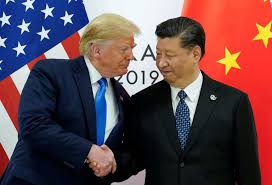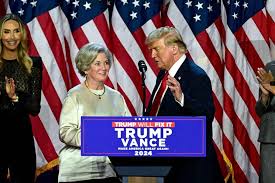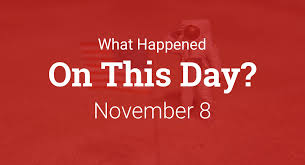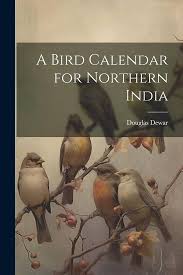MAY
Author: Douglas Dewar
part five
Catagory:Reading
Author:
Posted Date:11/07/2024
Posted By:utopia online
The melancholy days are come, the saddest of the year.
The Minstrelsy of the Woods.
Low from the brink the waters shrink;
The deer all snuff for rain;
The panting cattle search for drink
Cracked glebe and dusty plain;
The whirlwind, like a furnace blast,
Sweeps clouds of darkening sand.
WATERFIELD. Indian Ballads.
Now the burning summer sun
Hath unchalleng'd empire won
And the scorching winds blow free,
Blighting every herb and tree.
R. T. H. GRIFFITH.
May in the plains of India! What unpleasant memories it recalls! Stifling nights in which sleep comes with halting steps and departs leaving us unrefreshed. Long, dreary days beneath the punkah in a closed bungalow which has ceased to be enlivened by the voices of the children and the patter of their little feet. Hot drives to office, under a brazen sky from which the sun shines with pitiless power, in the teeth of winds that scorch the face and fill the eyes with dust.
It is in this month of May that the European condemned to existence in the plains echoes the cry of the psalmist: "Oh that I had wings like a dove! for then would I fly away, and be at rest"—in the Himalayas. There would I lie beneath the deodars and, soothed by the rustle of their wind-caressed branches, drink in the pure cool air and listen to the cheerful double note of the cuckoo. The country-side in the plains presents a sorry spectacle. The gardens that had some beauty in the cold weather now display the abomination of desolation—a waste of shrivelled flowers, killed by the relentless sun. The spring crops have all been cut and the whole earth is dusty brown save for a few patches of young sugar-cane and the dust-covered verdure of the mango topes. It is true that the gold-mohur trees and the Indian laburnums are in full flower and the air is heavily laden with the strong scent of the nim blossoms, but the heat is so intense that the European is able to enjoy these gifts of nature only at dawn. Nor has the ripening jack-fruit any attractions for him. He is repelled by its overpowering scent and sickly flavour. Fortunately the tastes of all men are not alike. In the eyes of the Indian this fruit is a dish fit to be set before the gods. The pipal trees, which are covered with tender young leaves, now offer to the birds a feast in the form of numbers of figs, no larger than cranberries. This generous offer is greedily accepted by green pigeons, mynas and many other birds which partake with right goodwill and make much noise between the courses. No matter how intense the heat be, the patient cultivator issues forth with his cattle before sunrise and works at his threshing floor until ten o'clock, then he seeks the comparative coolness of the mango tope and sleeps until the sun is well on its way to the western horizon, when he resumes the threshing of the corn, not ceasing until the shades of night begin to steal over the land.
The birds do not object to the heat. They revel in it. It is true that in the middle of the day even they seek some shady tree in which to enjoy a siesta and await the abatement of the heat of the blast furnace in which they live, move and have their being. The long day, which begins for them before 4 a.m., rather than the intense heat, appears to be the cause of this midday sleep. Except during this period of rest at noon the birds are more lively than they were in April.
The breeding season is now at its height. In May over five hundred species of birds nest in India. No individual is likely to come across all these different kinds of nests, because, in order to do so, that person would have to traverse India from Peshawar to Tinnevelly and from Quetta to Tenasserim. Nevertheless, the man who remains in one station, if he choose to put forth a little energy and defy the sun, may reasonably expect to find the nests of more than fifty kinds of birds. Whether he be energetic or the reverse he cannot fail to hear a great many avian sounds both by day and by night. In May the birds are more vociferous than at any other time of year. The fluty cries of the koel and the vigorous screams of the brain-fever bird penetrate the closed doors of the bungalow, as do, to a less extent, the chatter of the seven sisters, the calls of the mynas, the towee, towee, towee of the tailor-bird, the whoot, whoot, whoot of the crow-pheasant, the monotonous notes of the coppersmith and the green barbet, the uk, uk, uk of the hoopoe, the cheerful music of the fantail flycatcher, the three sweet syllables of the iora—so be ye, the tee, tee, tee, tee of the nuthatch, the liquid whistle of the oriole and, last but not least, the melody of the magpie-robin. The calls of the hoopoe and nuthatch become less frequent as the month draws to a close; on the other hand, the melody of the oriole gains in strength.
As likely as not a pair of blue jays has elected to rear a brood of young hopefuls in the chimney or in a hole in the roof. When this happens the human occupant of the bungalow is apt to be driven nearly to distraction by the cries of the young birds, which resemble those of some creature in distress, and are uttered with "damnable reiteration."
All these sounds, however, reach in muffled form the ear of a human being shut up in a bungalow; hence it is the voices of the night rather than those of the day with which May in India is associated. Most people sleep out of doors at this season, and, as the excessive heat makes them restless, they have ample opportunity of listening to the nightly concert of the feathered folk. The most notable performers are the cuckoos. These birds are fully as nocturnal as the owls. The brain-fever bird (Hierococcyx varius) is now in full voice, and may be heard, both by day and by night, in all parts of Northern India, east of Umballa. This creature has two calls. One is the eternal "brain-fever, brain-fever, BRAIN-FEVER," each "brain-fever" being louder and pitched in a higher key than the previous one, until the bird reaches its top note. The other call consists of a volley of descending notes, uttered as if the bird were unwinding its voice after the screams of "brain-fever." The next cuckoo is not one whit less vociferous than the last. It is known as the Indian koel (Eudynamis honorata). This noble fowl has three calls, and it would puzzle anyone to say which is the most powerful. The usual cry is a crescendo ku-il, ku-il, ku-il, which to Indian ears is very sweet-sounding. Most Europeans are agreed that it is a sound of which one can have too much. The second note is a mighty avalanche of yells and screams, which Cunningham has syllabised as Kúk, kuu, kuu, kuu, kuu, kuu. The third cry, which is uttered only occasionally, is a number of shrill shrieks: Hekaree, karee, karee, karee.
The voice of the koel is heard throughout the hours of light and darkness in May, so that one wonders whether this bird ever sleeps. The second call is usually reserved for dawn, when the bird is most vociferous. This cry is particularly exasperating to Europeans, since it often awakens them rudely from the only refreshing sleep they have enjoyed, namely, that obtained at the time when the temperature is comparatively low. The koel extends into the Punjab and is heard throughout Northern India.
The third of the cuckoos which enlivens the hot weather in the plains is the Indian cuckoo (Cuculus micropterus). This species dwells chiefly in the Himalayas, but late in April or early in May certain individuals seek the hot plains and remain there for some months. They do not extend very far into the peninsula, being numerous only in the sub-Himalayan tracts as far south as Fyzabad. The call of this cuckoo is melodious and easily recognised. Indians represent it as Bouto-taku, while some Englishmen maintain that the bird says "I've lost my love." To the writer's mind the cry is best represented by the words wherefore, wherefore, repeated with musical cadence. This bird does not usually call much during the day. It uplifts its voice about two hours before sunset and continues calling intermittently until some time after sunrise. The note is often uttered while the bird is on the wing.
Scarcely less vociferous than the cuckoos are the owls. Needless to state that the tiny spotted owlets make a great noise in May. They are loquacious throughout the year, especially on moonlight nights. Nor do they wait for the setting of the sun until they commence to pour forth what Eha terms a "torrent of squeak and chatter and gibberish."
Almost as abundant as the spotted owlet is the jungle owlet (Glaucidium radiatum). This species, like the last-mentioned, does not confine its vocal efforts to the hot weather. It is vociferous throughout the year; however, special mention must be made of it in connection with the month of May, because it is not until a human being sleeps out of doors that he takes much notice of the bird.
The note of this owl is very striking. It may be likened to the noise made by a motor cycle when it is being started. It consists of a series of dissyllables, low at first with a pause after each, but gradually growing in intensity and succeeding one another at shorter intervals, until the bird seems to have got fairly into its stride, when it pulls up with dramatic suddenness. Tickell thus syllabises its call: Turtuck, turtuck, turtuck, turtuck, turtuck, tukatu, chatatuck, atuckatuck.
Another sound familiar to those who sleep out of doors at this season is a low, soft "what," repeated at intervals of about a minute.
The writer ascribes this call to the collared scops owl (Scops bakkamoena). Mr. A. J. Currie, however, asserts that the note in question is that emitted by spotted owlets (Athene brama) when they have young. He states that he has been quite close to the bird when it was calling.
A little patient observation will suffice to decide the point at issue.
It is easy to distinguish between the two owls, as the scops has aigrettes or "horns," which the spotted owlet lacks.
The nightjars help to swell the nocturnal chorus. There are seven or eight different species in India, but of these only three are commonly heard and two of them occur mainly in forest tracts. The call of the most widely-distributed of the Indian goatsuckers—Caprimulgus asiaticus, the common Indian nightjar—is like unto the sound made by a stone skimming over ice. Horsfield's goatsucker is a very vociferous bird. From March till June it is heard wherever there are forests. As soon as the shadows of the evening begin to steal across the sky its loud chuk, chuk, chuk, chuk, chuk cleaves the air for minutes together. This call to some extent replaces by night the tonk, tonk, tonk of the coppersmith, which is uttered so persistently in the day-time. In addition to this note Horsfield's nightjar emits a low soft chur, chur, chur.
The third nightjar, which also is confined chiefly to forest tracts, is known as Franklin's nightjar (C. monticolus). This utters a harsh tweet which at a distance might pass for the chirp of a canary with a sore throat.
Other sounds heard at night-time are the plaintive did-he-do-it pity-to-do-it of the red-wattled lapwing (Sarcogrammus indicus), and the shrill calls of other plovers.
As has already been said, the nesting season is at its height in May. With the exception of the paroquets, spotted owlets, nuthatches, black vultures and pied kingfishers, which have completed nesting operations for the year, and the golden-backed woodpeckers and the cliff-swallows, which have reared up their first broods, the great majority of the birds mentioned as having nests or young in March or April are still busily occupied with domestic cares.
May marks the close of the usual breeding season for the jungle crows, skylarks, crested larks, finch-larks, wood-shrikes, yellow-throated sparrows, sand-martins, pied wagtails, green barbets, coppersmiths, rollers, green bee-eaters, white-breasted kingfishers, scavenger vultures, tawny eagles, kites, shikras, spur-winged plovers, little ringed plovers, pied woodpeckers, night herons and pied chats. In the case of the tree-pies, cuckoo-shrikes, seven sisters, bank-mynas and blue-tailed bee-eaters the nesting season is now at its height. All the following birds are likely to have either eggs or nestlings in May: the white-eyes, ioras, bulbuls, tailor-birds, shrikes, brown rock-chats, Indian robins, magpie-robins, sunbirds, swifts, nightjars, white-eyed buzzards, hoopoes, green pigeons, blue rock-pigeons, doves, sparrows, the red and yellow wattled lapwings, minivets, wire-tailed swallows, red-headed merlins, fantail flycatchers, pipits, sand-grouse and grey partridges. The nests of most of these have been described already.
In the present month several species begin nesting operations. First and foremost among these is the king-crow or black drongo (Dicrurus ater). No bird, not even the roller, makes so much ado about courtship and nesting as does the king-crow, of which the love-making was described last month. A pair of king-crows regards as its castle the tree in which it has elected to construct a nest. Round this tree it establishes a sphere of influence into which none but a favoured few birds may come. All intruders are forthwith set upon by the pair of little furies, and no sight is commoner at this season than that of a crow, a kite, or a hawk being chased by two irate drongos. The nest of the king-crow is a small cup, wedged into the fork of a branch high up in a tree.
The Indian oriole (Oriolus kundoo) is one of the privileged creatures allowed to enter the dicrurian sphere of influence, and it takes full advantage of this privilege by placing its nest almost invariably in the same tree as that of the king-crow. The oriole is a timid bird and is glad to rear up its family under the ægis of so doughty a warrior as the Black Prince of the Birds. The nest of the oriole is a wonderful structure. Having selected a fork in a suitable branch, the nesting bird tears off a long strip of soft pliable bark, usually that of the mulberry tree. It proceeds to wind one end of this strip round a limb of the forked branch, then the other end is similarly bound to the other limb. A second and a third strip of bark are thus dealt with, and in this manner a cradle or hammock is formed. On it a slender cup-shaped nest is superimposed. This is composed of grasses and fibres, some of which are wound round the limbs of the forked branch, while others are made fast to the strands of bark. The completed nest is nearly five inches in diameter. From below it looks like a ball of dried grass wedged into the forked branch.
The oriole lays from two to four white eggs spotted with dull red. The spots can be washed off by water; sometimes their colour "runs" while they are in the nest, thereby imparting a pink hue to the whole shell. Both sexes take part in nest construction, but the hen alone appears to incubate. She is a very shy creature, and is rarely discovered actually sitting, because she leaves the nest with a little cry of alarm at the first sound of a human footfall.
May and June are the months in which to look for the nests of that superb bird—the paradise flycatcher (Terpsiphone paradisi). This is known as the rocket-bird or ribbon-bird because of the two long fluttering tail feathers possessed by the cock. The hen has the appearance of a kind of bulbul, being chestnut-hued with a white breast and a metallic blue-black crest. For the first year of their existence the young cocks resemble the hens in appearance. Then the long tail feathers appear. In his third year the cock turns white save for the black-crested head. This species spends the winter in South India. In April it migrates northwards to summer in the shady parts of the plains of Bengal, the United Provinces and the Punjab, and on the lower slopes of the Himalayas. The nest is a deep, untidy-looking cup, having the shape of an inverted cone. It is always completely covered with cocoons and cobweb. It is usually attached to one or more of the lower branches of a tree. Both sexes work at the nest and take part in incubation. The long tail feathers of the sitting cock hang down from the nest like red or white satin streamers according to the phase of his plumage. In the breeding season the cock sings a sweet little lay—an abridged version of that of the fantail flycatcher. When alarmed both the cock and the hen utter a sharp tschit.
May is perhaps the proper month in which to describe the nesting of the various species of myna.
According to Hume the normal breeding season of the common myna (Acridotheres tristis) lasts from June to August, during which period two broods are reared. This is not correct. The nesting season of this species begins long before June. The writer has repeatedly seen mynas carrying twigs and feathers in March, and has come across nests containing eggs or young birds in both April and May. June perhaps is the month in which the largest numbers of nests are seen. The cradle of the common myna is devoid of architectural merit. It is a mere conglomeration of twigs, grass, rags, bits of paper and other oddments. The nesting material is dropped haphazard into a hole in a tree or building, or even on to a ledge in a verandah. Four beautiful blue eggs are laid.
At Peshawar Mr. A. J. Currie once found four myna's eggs in a deserted crows' nest in a tree.
As has already been stated, the nest of the bank-myna (A. ginginianus) is built in a hole in a well, a sandbank, or a cliff. The birds breed in colonies; each pair excavates its own nest by means of beak and claw. Into the holes dug out in this manner the miscellaneous nesting materials are dropped pell-mell after the manner of all mynas. The breeding season of this species lasts from April to July, May being the month in which most eggs are laid.
The black-headed or brahminy myna (Temenuchus pagodarum) usually begins nesting operations about a month later than the bank-myna; its eggs are most often taken in June. The nest, which is an untidy, odoriferous collection of rubbish, is always in a cavity. In Northern India a hole in a tree is usually selected; in the South buildings are largely patronised. Some years ago the writer observed a pair of these birds building a nest in a hole made in the masonry for the passage of the lightning conductor of the Church in Fort St. George, Madras.
May marks the commencement of the breeding season of the pied starlings (Sturnopastor contra). In this month they begin to give vent with vigour to their cheerful call, which is so pleasing as almost to merit the name of song.
Throughout the rains they continue to make a joyful noise. Not that they are silent at other seasons; they call throughout the year, but, except at the breeding period, their voices are comparatively subdued.
The nest is a bulky, untidy mass of straw, roots, twigs, rags, feathers and such-like things. It is placed fairly low down in a tree.
Many of these nests are to be seen in May, but the breeding season is at its height in June and July.
The grey hornbills (Lophoceros birostris) are now seeking out holes in which to deposit their eggs. The hen, after having laid the first egg, does not emerge from the nest till the young are ready to fly. During the whole of this period she is kept a close prisoner, the aperture to the nest cavity having been closed by her mate and herself with their own droppings, a small chink alone being left through which she is able to insert her beak in order to receive the food brought to her by the cock.
Mr. A. J. Currie gives an interesting account of a grey hornbill's nest he discovered at Lahore in 1910. About the middle of April he noticed a pair of paroquets nesting in a hole in a tree. On April 28th he saw a hornbill inspecting the hole, regardless of the noisy protests of the paroquets. On the 30th he observed that the hole had become smaller, and suspected that the hornbills had taken possession. On May 1st all that was left of the hole was a slit. On May 6th Mr. Currie watched the cock hornbill feeding the hen. First the male bird came carrying a fig in his bill. Seeing human beings near the nest, he did not give the fig to the hen but swallowed it and flew off. Presently the cock reappeared with a fig which he put into the slit in the plastering; after he had parted with the fig he began to feed the hen by bringing up food from his crop. During the process the beak of the hen did not appear at the slit.
On May 7th Mr. Currie opened out the nest. The hole was sixteen feet from the ground and the orifice had a diameter of three inches; all of this except a slit, broadest at the lower part, was filled up by plaster. This plaster was odourless and contained embedded in it a number of fig seeds.
The nest hole was capacious, its dimensions being roughly 1 foot by 1 foot by 2 feet. From the bottom five handfuls of pieces of dry bark were extracted. Three white eggs were found lying on these pieces of bark. The sitting hen resented the "nest-breaking," and, having pecked viciously at the intruder, tried to escape by climbing up to the top of the nest hole. She was dragged out of her retreat by the beak, after an attempt to pull her out by the tail had resulted in all her tail feathers coming away in her captor's hand!
The young green parrots have all left their nests and are flying about in noisy flocks. They may be distinguished from the adults by the short tail and comparatively soft call.
Most pairs of hoopoes are now accompanied by at least one young bird which is almost indistinguishable from the adults. The young birds receive, with squeaks of delight, the grubs or caterpillars proffered by the parents. Occasionally a pair of hoopoes may be seen going through the antics of courtship preparatory to raising a second brood.
In scrub-jungle parties of partridges, consisting of father, mother and five or six little chicks, wander about.
As the shades of night begin to fall family parties of spotted owlets issue from holes in trees or buildings. The baby birds squat on the ground in silence, while the parents make sallies into the air after flying insects which they bring to the young birds.
The peafowl and sarus cranes are indulging in the pleasures of courtship. The young cranes, that were hatched out in the monsoon of last year, are now nearly as big as their parents, and are well able to look after themselves; ere long they will be driven away and made to do so. The display of the sarus is not an elaborate process. The cock turns his back on the hen and then partially opens his wings, so that the blackish primaries droop and the grey secondary feathers are arched. In this attitude he trumpets softly.
The water-hens have already begun their uproarious courtship. Their weird calls must be heard to be appreciated. They consist of series of kok, koks followed by roars, hiccups, cackles and gurgles.
Black partridges, likewise, are very noisy throughout the month of May. Their nesting season is fast approaching.
Even as April showers in England bring forth May flowers, so does the April sunshine in India draw forth the marriage adornments of the birds that breed in the rains. The pheasant-tailed jacanas are acquiring the long tail feathers that form the wedding ornaments of both sexes.
The various species of egret and the paddy bird all assume their nuptial plumes in May.
In the case of the egret these plumes are in great demand and are known to the plumage trade as "ospreys."
The plumes in question consist of long filamentous feathers that grow from the neck of the egret and also from its breast. In most countries those who obtain these plumes wait until the birds are actually nesting before attempting to secure them, taking advantage of the fact that egrets nest in colonies and of the parental affection of the breeding birds. A few men armed with guns are able to shoot every adult member of the colony, because the egrets continue to feed their young until they are shot. As the plumes of these birds are worth nearly their weight in gold, egrets have become extinct in some parts of the world.
The export of plumage from India is unlawful, but this fact does not prevent a very large feather trade being carried on, since it is not difficult to smuggle "ospreys" out of the country.
Doubtless the existing Notification of the Government of India, prohibiting the export of plumage, has the effect of checking, to some extent, the destruction of egrets, but there is no denying the fact that many of the larger species are still shot for their plumes while breeding.
In the case of cattle-egrets (Bubulcus coromandus) the custom of shooting them when on the nest has given place to a more humane and more sensible method of obtaining their nuchal plumes. These, as we have seen, arise early in May, but the birds do not begin to nest until the end of June. The cattle-egret is gregarious; it is the large white bird that accompanies cattle in order to secure the insects put up by the grazing quadrupeds. Taking advantage of the social habits of these egrets the plume-hunters issue forth early in May and betake themselves, in parties of five or six, to the villages where the birds roost. Their apparatus consists of two nets, each some eight feet long and three broad. These are laid flat on the ground in shallow water, parallel to one another, about a yard apart. The inner side of each net is securely pegged to the ground. By an ingenious arrangement of sticks and ropes a man, taking cover at a distance of twenty or thirty yards, by giving a sharp pull at a pliable cane, can cause the outer parts of each net to spring up and meet to form an enclosure which is, in shape, not unlike a sleeping-pal tent. When the nets have been set in a pond near the trees where the cattle-egrets roost at night and rest in the day-time, two or three decoy birds—captured egrets with their eyes sewn up to prevent them struggling or trying to fly away—are tethered in the space between the two nets; these last, being laid flat under muddy water, are invisible. Sooner or later an egret in one of the trees near by, seeing some of its kind standing peacefully in the water, alights near them. Almost before it has touched the ground the cane is pulled and the egret finds itself a prisoner. One of the bird-catchers immediately runs to the net, secures the victim, opens out its wings, and, holding each of these between the big and the second toe, pulls out the nuchal plumes. This operation lasts about five seconds. The bird is then set at liberty, far more astonished than hurt. It betakes itself to its wild companions, and the net is again set. Presently another egret is caught and divested of its plumes, and the process continues all day.
The bird-catchers spend six weeks every year in obtaining cattle-egret plumes in this manner. They sell the plumes to middle-men, who dispose of them to those who smuggle them out of India.
If stuffed birds were used as decoys and the plumes of the captured birds were snipped off with scissors instead of being pulled out, the operation could be carried on without any cruelty, and, if legalised and supervised by the Government, it could be made a source of considerable revenue.


.jpg)














 👁 :
👁 :
 👁 :
👁 :
 👁 :
👁 :
 👁 :
👁 :
 👁 :1
👁 :1
 👁 :1
👁 :1
 👁 :
👁 :